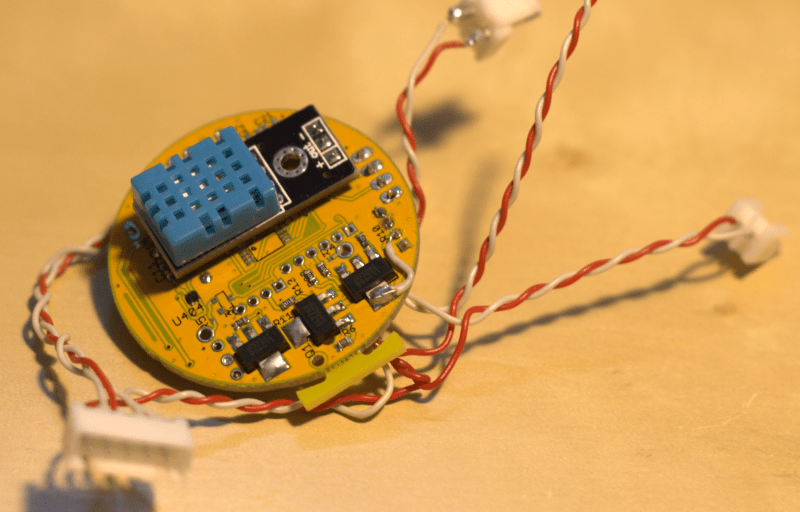- 02
Jul - 2017Android Things
3 min | 2617I had some humidity problems in the basement and I thought I can buy a dehumidifier. I bought this one on banggood Dehumidifier 500ml. I knew they are not good enough, but I wanted to try.
This type of dehumidifier uses a peltier element to cool an alumium disipator (peltier cool side), which condenses the humidity. The condensed humidity drips into a water tank until it is full. Then, a switch is triggered and the system stops. The peltier hot side has a bigger disipator and together with a fan disipate the generated heat.
![C++]()
Code: https://goo.gl/CPGcYK ![Eagle]()
Eagle: https://goo.gl/xFcc24 ![Android Things]()
nRF24Things: https://goo.gl/SNnhxq ![Dehumidifier Internal Photo]()
Alumium disipator, which condenses the humidity & water tank I thought I could make it "smarter". I took one of my PiCoBo boards, which I designed in 2014 and soldered the parts. Now I have a dehumidifier, which can measure temperature and humidity, it has an USB connection and a nrf24l01+ module, which reports the measured values and the current states (on/off, water tank inside, water tank full etc.) to a raspberry pi. The last running Android Things!
Here some pics of the PiCoBo (without nrf24l01+) Rev1.0:

PiCoBo: MSP430G2553 side
PiCoBo: Sensor (DHT11) & Mosfet sideInside the dehumidifier case it looks like this (fixed with "some" hot glue):
![PiCoBo]()
PiCoBo glued to the dehumidifier PiCoBo is a multi-target board. I designed it using the MSP430G2553 (20/28 pin version), which is part of the MSP430 Texas Instruments family of ultra-low-power microcontrollers. The board includes a CP2102 which can be used for communication over UART -working at baud rate of 9600. The board can be supplied using a C2032 battery, over USB or external DC source up to 10V. It uses a TPS77301DGK to regulate the max. voltage of 3.6V needed for the MSP430. Up to three IRLL2705 can be soldered to the board to switch on/off directly (or using PWM) voltages up to 55V and 3.8A. Multiple pinouts are available to connect external sensors (e.g. DHT11), servo motors, leds etc. For testing uses it can be programmed using the MSP430G2553 LaunchPad.
I used a DHT11 sensor, which has the following specifications. A good comparison between temperature & humidity sensors (some of them low cost) can be found on the following links:
- Wide range of Hygrometers: DHT22, AM2302, AM2320, AM2321, SHT71, HTU21D, Si7021, BME280
- Compare DHT22, DHT11 and Sensirion SHT71
For the next designs, I will be using a DHT22.
To sumarize, here you can find the main hardware and software components that were used in this project. I included some links to buy the hardware components from Alliexpress or Texas Instruments.
Hardware
Software
PS: Good luck to all of you who are struggling with the washing machine in the basement.
We use cookies to improve our services. Read more about how we use cookies and how you can refuse them.











Empty